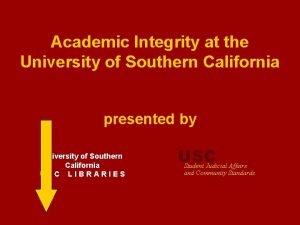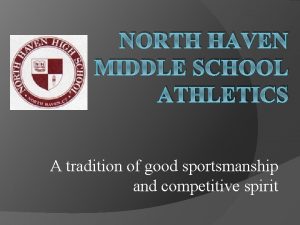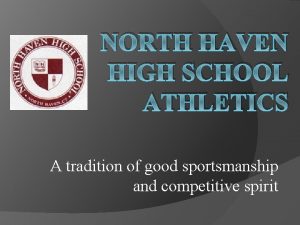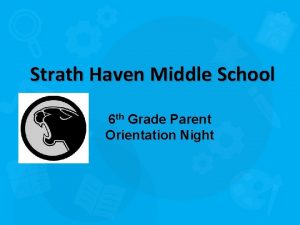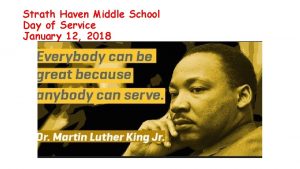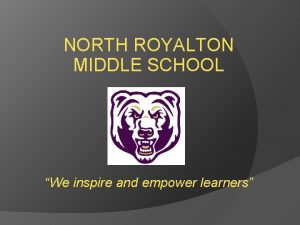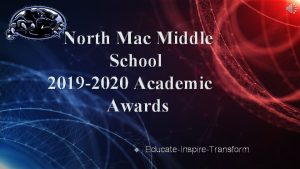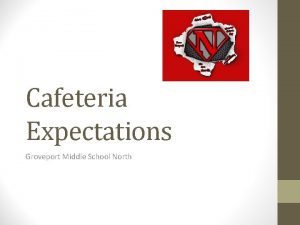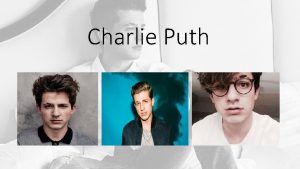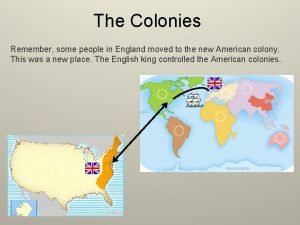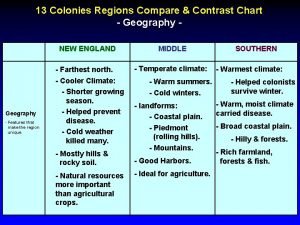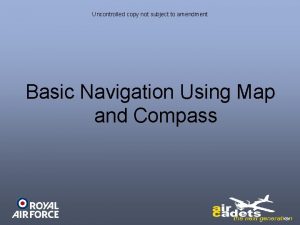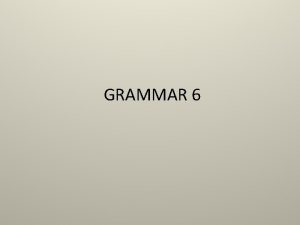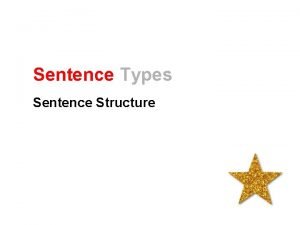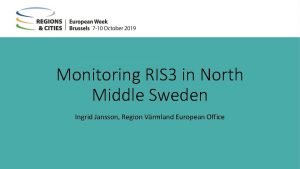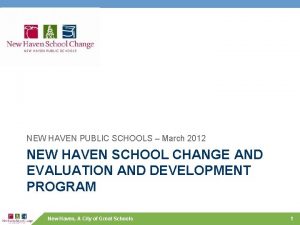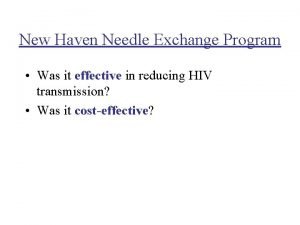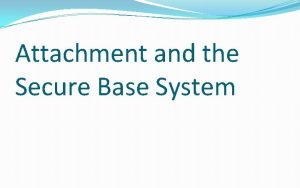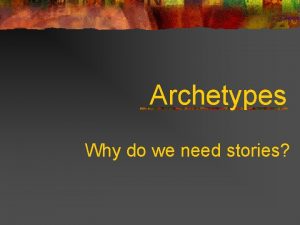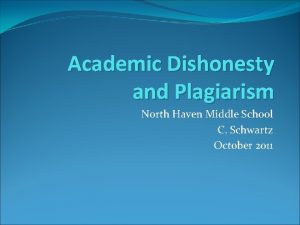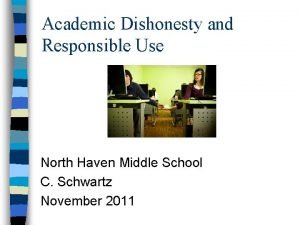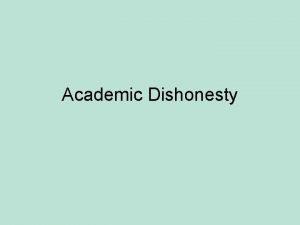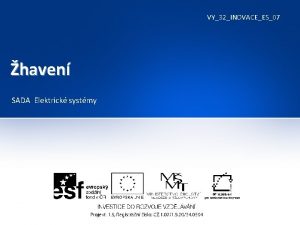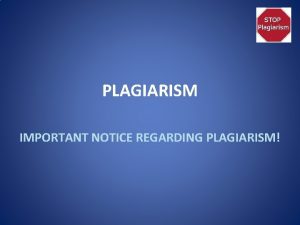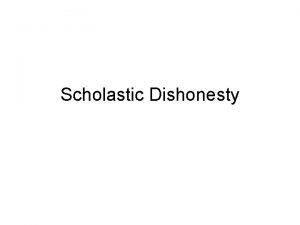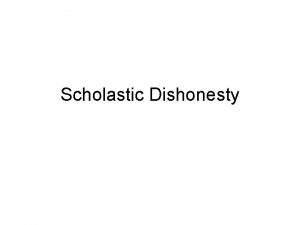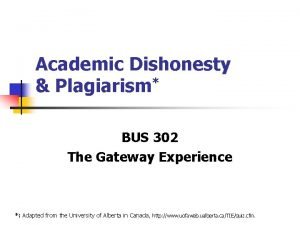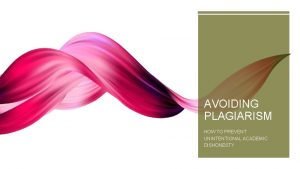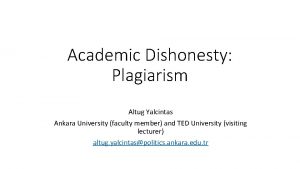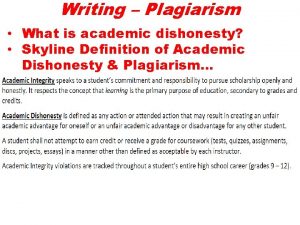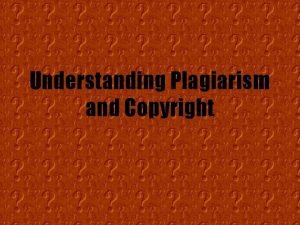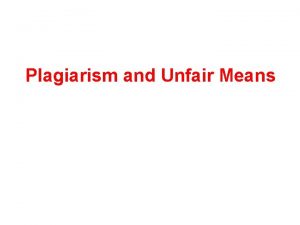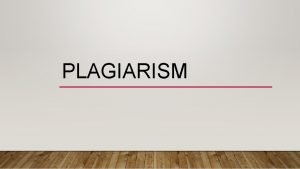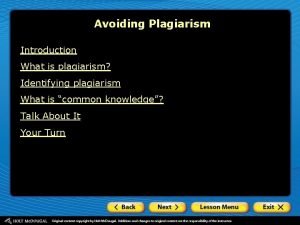Academic Dishonesty and Plagiarism North Haven Middle School

























- Slides: 25

Academic Dishonesty and Plagiarism North Haven Middle School 8 th grade C. Schwartz February 27, 2017

Academic Dishonesty What is it all about? What do students need to know? What happens if you violate? How can we prevent it?

Academic Dishonesty Policy North Haven Public Schools’ BOE 5121. 3 policy includes: Cheating Plagiarism Students are expected to pursue their school work with integrity and honesty. Cheating and plagiarism demonstrates a lack of integrity and character that is inconsistent with the goals and values of the District. Source: North Haven Board of Education Policy 5121. 3(b) 6/29/16.

Cheating Copying or attempting to copy another student’s homework, quiz, test, essay or lab report. Cheating on tests through such means as cheat sheets, use of unauthorized electronic devices, and discussion of test information with other students Obtaining test questions and/or copies of tests outside the classroom setting Lending and/or copying from another student’s work (homework, tests, projects, assignments) Source: North Haven Board of Education Policy 5121. 3(b) 6/29/16.

Cheating (Continued) Altering or interfering with grading (forging signatures, changing or inserting answers on work after grading). Allowing another student to copy answers during a test situation. Collaborating with other students on an assignment in direct violation of teachers instructions. Using books and electronic information in generating on an assignment in direct violation of teachers instructions. Source: North Haven Board of Education Policy 5121. 3(b) 6/29/16.

Cheating (Continued) Accessing, taking an benefitting from copies of tests and quizzes previously used or to be used by teachers without permission Submitting work previously presented in this course or in any course unless authorized by the affected teacher. Source: North Haven Board of Education Policy 5121. 3(b) 6/29/16.

Plagiarism Defined as copying the language, structure and /or ideas of another and representing them as one’s own work. Examples include but not limited to: Copying material from the source, including the Internet, without citing the source Paraphrasing the source without proper citation. Copying stories, in whole or part, which appear in books, magazines, television, film or electronic media. Copying directly, without making changes, alterations or adaptations from a drawing, painting, illustration, photographic image, or graphic symbol without citing the source Submitting papers written in whole or part by someone else. Source: North Haven Board of Education Policy 5121. 3(b) 6/29/16.

Plagiarism (continued) “Submitting papers on which the student has received substantial assistance from peers and/or adults that dramatically changes the character of the work so that it is no longer the student’s own. ” “Submitting a paper purchased from a research or term paper service, including, but not limited to the Internet”. “When a student puts his/her name on a piece of work, it is that student’s responsibility to distinush between what is his/hers and what is not and to credit those who have in any way contributed”. Source: North Haven Board of Education Policy 5121. 3(b) 6/29/16.

Preventing Plagiarism Prepare a works cited document Use in paragraph citation when necessary Do NOT copy and paste Practice good note taking strategies

Consequences A student who engages in any form of academic dishonesty will be subject to the loss of credit for the work in question, as well as other disciplinary measures. Could include suspension or explusion

Technology Use/Acceptable Use Policy Students are permitted to use the district’s computer system for legitimate educational purposes. Personal use of district computer systems is expressly prohibited. Conduct which constitutes inappropriate use includes, but not limited to the following: Cyber bullying; Sending any form of harassing, threatening, or intimidating message, at any time, to any person (such communications may also be a crime); Gaining or seeking to gain unauthorized access to computer systems; Damaging computers, computer files, computer system or computer networks; to deliberately attempt to disrupt the computer system or destroy data by spreading computer viruses or any other means. These actions are illegal. Downloading or modifying computer software of the district in violation of the district’s licensure agreement(s) and/or without authorization from a teacher or administrator;

Acceptable Use Using another person’s password under any circumstance; Trespassing in or tampering with any other person’s folder, work or files; Sending any message that breaches the district’s confidentiality requirements, or the confidentiality of students; Posting personal information or photographs or other people. Personal information includes home address, telephone, or other identifying information as determined by the district; Sending any copyrighted material over the system; Using computer systems for any non-educational purpose, or in a manner that interferes with the district’s educational programs; Accessing or attempting to access any material that is obscene, contains child pornography, or is harmful to minors; Transmitting or receiving e-mail communications or accessing information on the Internet for non-educational purposes; To engage in any other illegal act, such as arranging for a drug sale or the purchase of alcohol, engaging in criminal activity, threatening the safety of a person, etc. ; Accessing or attempting to access social networks sites (e. g. Facebook, Twitter, My Space, Insta. Gram, etc. ) without a legitimate purpose.

Turnitin NHMS Software program Used by colleges and high schools Scans student work Plagiarism and multiple submissions

Senario You are approached by a classmate and asked to allow them to copy from your paper during a test? What do you say? Why do you make that decision?

Scenario You have a substitute teacher and they are not watching the class carefully. The student next to you logs into a website with the answers to a worksheet you are doing and offers to text the answers to everyone. What do you say? Why did you make that decision?

Scenario You have an assignment due tomorrow and have run out of time to do your research and write the report. You think about going to the Internet and copying and pasting the answers. What do you do? Why did you make that decision?

In Paragraph Citation Use for direct quote Use for paraphrasing (Author, page number) (Title of Web page) Use only for unique concept or information not as a general citation Must still include complete Works Cited document

Works Cited Cite every source MLA format On-line bibliography maker In paragraph citation

Strategies Read/Think/Write Practice good note taking skills No complete sentences Use shorthand or phrases Outline Be careful with Internet sources Do not copy and paste

Information Sources Use multiple sources Multiple formats Print (book, encyclopedia, periodical Internet (web sites, databases) Other media (video) E-mail - Interview

Practice – World Book on-line Columbus, Christopher (1451 -1506), was an outstanding navigator and organizer of expeditions. He achieved fame by sailing across the Atlantic Ocean from Europe in search of a western sea route to Asia. However, he never accomplished this goal. Instead, in 1492, he encountered islands in the Caribbean Sea. Until that time, Europeans and Native Americans had not been aware of each other’s existence. During his four voyages westward, between 1492 and 1504, Columbus explored the Caribbean region and parts of Central and South America.

Practice – History. com But Columbus had a different idea: Why not sail west across the Atlantic instead of around the massive African continent? The young navigator’s logic was sound, but his math was faulty. He argued (incorrectly) that the circumference of the Earth was much smaller than his contemporaries believed it was; accordingly, he believed that the journey by boat from Europe to Asia should be not only possible but comparatively easy. He presented his plan to officials in Portugal and England, but it was not until 1491 that he found a sympathetic audience: the Spanish monarchs Ferdinand of Aragon and Isabella of Castile. Columbus wanted fame and fortune. Ferdinand Isabella wanted the same, along with the opportunity to export Catholicism to lands across the globe. (Columbus, a devout Catholic, was equally enthusiastic about this possibility. ) Columbus’ contract with the Spanish rulers promised that he could keep 10 percent of whatever riches he found, along with a noble title and the governorship of any lands he should encounter. On August 3, 1492, Columbus and his crew set sail from Spain in three ships: the Nina, the Pinta and the Santa Maria. On October 12, the ships made landfall–not in Asia, as Columbus assumed, but on one of the Bahamian islands. For months, Columbus sailed from island to island in what we now know as the Caribbean, looking for the “pearls, precious stones, gold, silver, spices, and other objects and merchandise whatsoever” that he had promised to his Spanish patrons, but he did not find much. In March 1493, leaving 40 men behind in a makeshift settlement on Hispaniola (present-day Haiti and the Dominican Republic), he returned to Spain.

Copyright A person’s legal right to ownership Music, book, Internet site Fair use

Strategies Don’t wait until the last minute!

 What is academic dishonesty
What is academic dishonesty Usc academic integrity
Usc academic integrity Uta academic dishonesty
Uta academic dishonesty North haven middle school
North haven middle school North haven high school athletics
North haven high school athletics Strath haven middle school
Strath haven middle school Strath haven middle school
Strath haven middle school Fedex kinkos north haven
Fedex kinkos north haven North royalton middle school
North royalton middle school North mac middle school
North mac middle school Middle school cafeteria expectations
Middle school cafeteria expectations Charles otto puth sr
Charles otto puth sr North east and cumbria ics
North east and cumbria ics North and south lesson 1 the industrial north
North and south lesson 1 the industrial north 13 colonies new england middle and southern
13 colonies new england middle and southern 13 colonies comparison chart
13 colonies comparison chart True north vs magnetic north
True north vs magnetic north The north pole ____ a latitude of 90 degrees north
The north pole ____ a latitude of 90 degrees north Whats a simple sentence
Whats a simple sentence Middle north of sweden
Middle north of sweden Ucl data safe haven
Ucl data safe haven Art lovers can visit the - metropolitan museum of art
Art lovers can visit the - metropolitan museum of art New haven teval
New haven teval Needle exchange new haven
Needle exchange new haven Safe haven vs secure base
Safe haven vs secure base The unfaithful wife archetype examples
The unfaithful wife archetype examples

